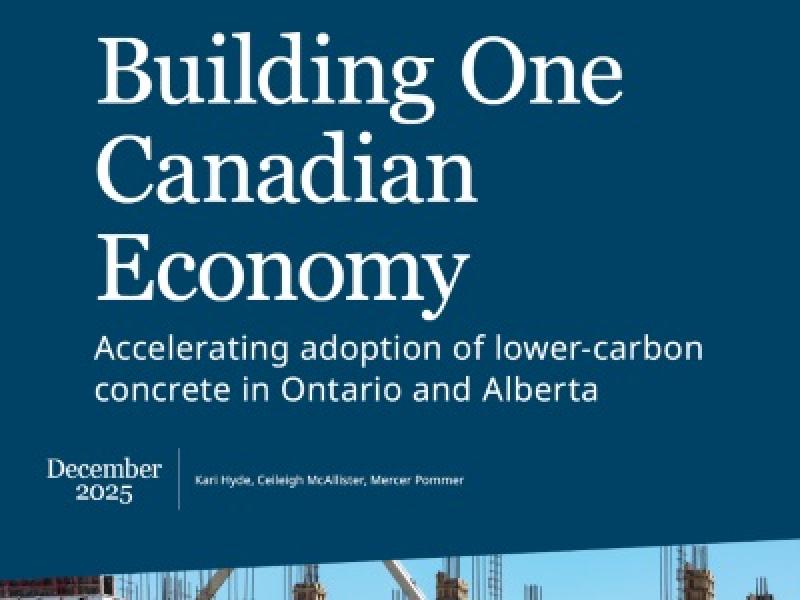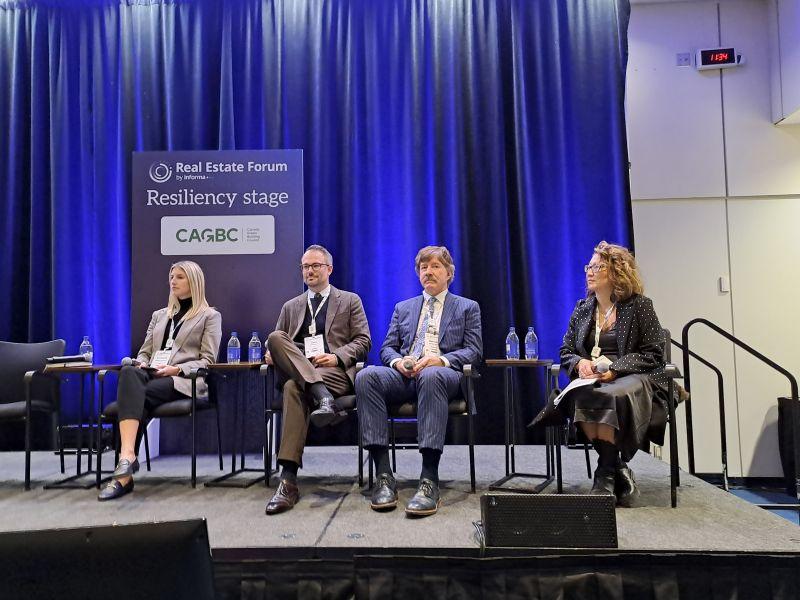
The Canadian construction sector can make big cuts to job site carbon emissions by using equipment powered by electricity and being efficient with heating, a report written by an industry group and a think tank suggests.
In Growing and Greening Canadian Construction, the think tank Transition Accelerator and the Canadian Construction Sustainability Alliance joined forces to study “practical cost-effective pathways” to decarbonize construction work and enhance operations.
Drawing upon over 600 projects from the nine members of the alliance — some of the biggest players in Canada's construction industry — the organizations settled on five actions that could achieve double-digit carbon emission reductions if fully implemented. Those are:
- electrification of light-duty vehicles and small equipment;
- optimizing and electrifying heating systems;
- adopting renewable diesel as a bridge fuel;
- connecting to grid power instead of diesel generators; and
- deploying hybrid and electric excavation equipment.
Today, the focus is on reducing the carbon emissions from building operations and the embodied carbon of construction materials, Jolene McLaughlin, vice-president of sustainable building solutions at EllisDon, said in an interview with Sustainable Biz Canada. But that misses the sources of pollution from construction, such as heavy equipment, generators and heaters.
“There hasn’t been a whole lot of effort or transparency around what the installation process actually takes,” she said.
EllisDon is one of the members of the Canadian Construction Sustainability Alliance. The other eight members of the Alliance are: Aecon, Bird, Chandos, Graham, Ledcor, Multiplex, PCL and Pomerleau.
Addressing the sector’s job site emissions is one of the “key priorities” in meeting Canada’s climate targets, McLaughlin said. The buildings and construction sector generates almost 40 per cent of global greenhouse gas emissions, according to the United Nations Environment Programme.
Reducing diesel use is critical
Data from the projects showed almost two thirds of the carbon emissions from construction stem from diesel consumption, followed by gasoline and natural gas. Thus, reducing diesel consumption is a common goal of the five pathways.
“We understand that electrification needs to be the end point, just from an energy availability perspective,” McLaughlin said. “Currently, we’re looking at what can we do to get the power generation at the site level to be cleaner.”
Across factors such as technical maturity and economic viability, some of the most impactful actions today are using electric-powered light-duty vehicles and small equipment, and optimizing and electrifying heating systems.
For light-duty vehicles and small equipment, this could entail battery-backed hybrid generators at job sites, converting truck and van fleets to electric models, and illuminating job sites with LEDs and solar-powered lights.
To keep construction sites at a comfortable temperature for workers, suggestions include electric heating paired with smart controls and improved enclosures so “we’re not just blowing heat out into the open air."
But adaptation and learning are important in the transition to low-carbon construction, she said. For example, the heating provided by electricity is often more dry than heat from diesel-powered sources, McLaughlin said. This presents a problem because low humidity affects materials during construction.
In the case of heating controls, a company will have to better understand “how to provide the right amount of heat at the right spot.”
Besides reducing carbon emissions, using sustainable technologies can come with financial benefits. EllisDon has saved tens of thousands of dollars on fuel per season by using smart controls for on-site heating, McLaughlin said.
Better data collection, closer industry collaboration

Outside of the five pathways, the report highlighted other ways the construction sector can move toward greener job sites.
Bridging data gaps is a key recommendation. McLaughlin said the report’s authors found construction can be responsible for up to 20 per cent of a building’s life-cycle emissions, much higher than some estimates that suggest four to five per cent.
The report lays out steps to collect more accurate information with small-scale sample projects, such as:
- establishing formal information sharing with project owners to access electricity and natural gas consumption data;
- including specific fuel reporting requirements in subcontracts; and
- using digital tools such as asset tracking systems to streamline equipment-level data collection.
It also urges the construction industry to form coalitions that stimulate demand for sustainable alternatives and share data, invest in training construction workers to operate the low-carbon technologies, and lead through demonstration.
“There’s a lot of pieces to the sustainability puzzle, and we’re slowly working together to figure out how can we reduce emissions as a group and support the industry in reducing emissions,” McLaughlin said.










